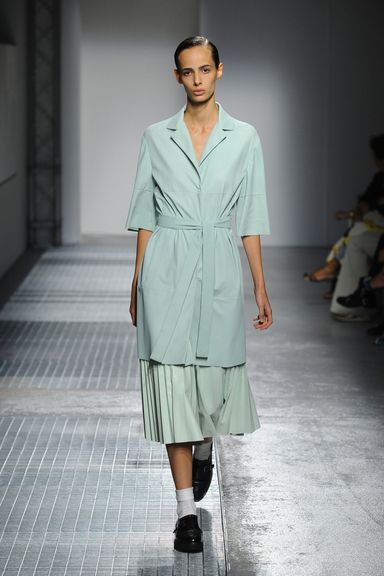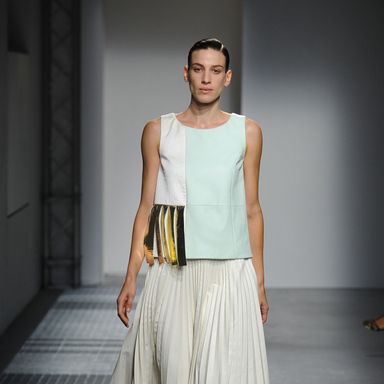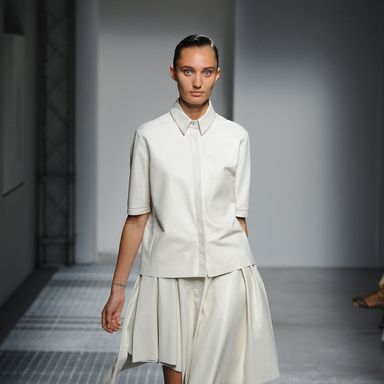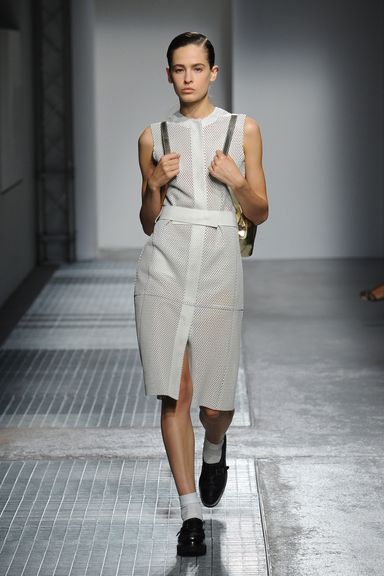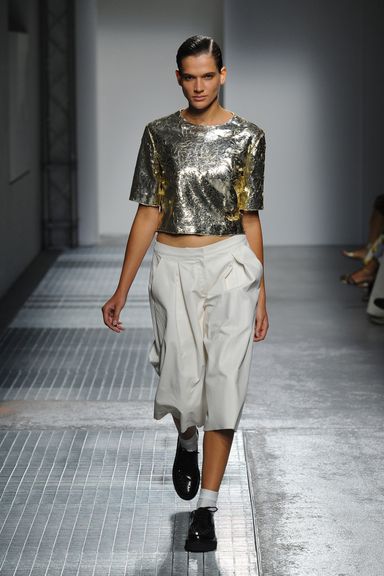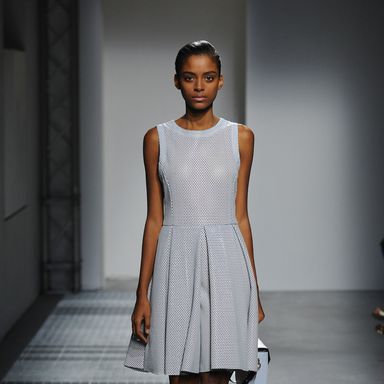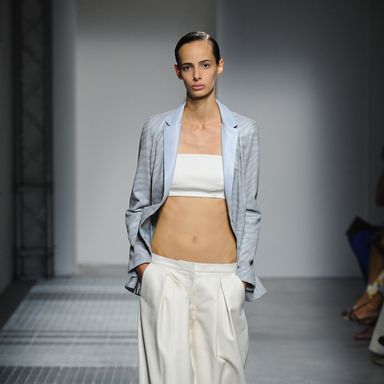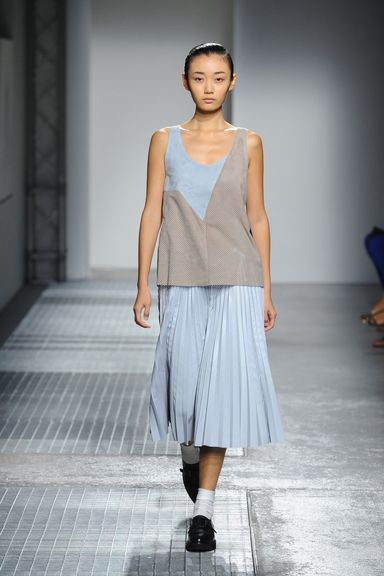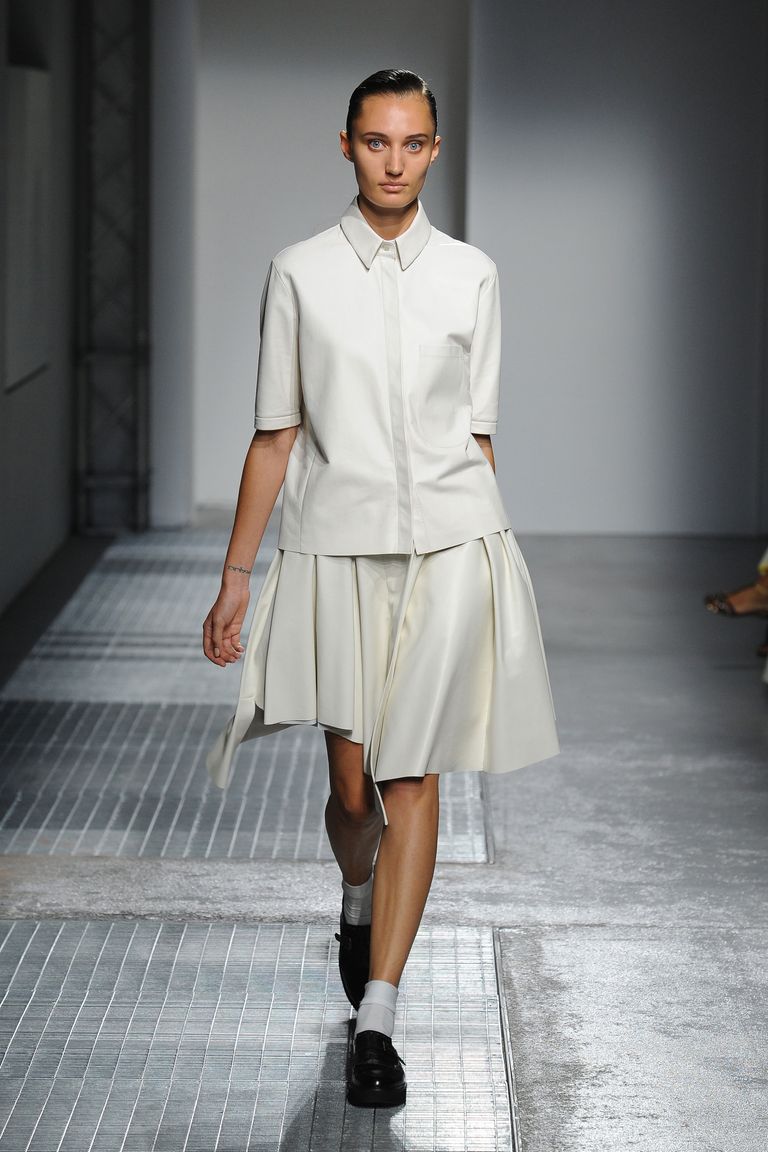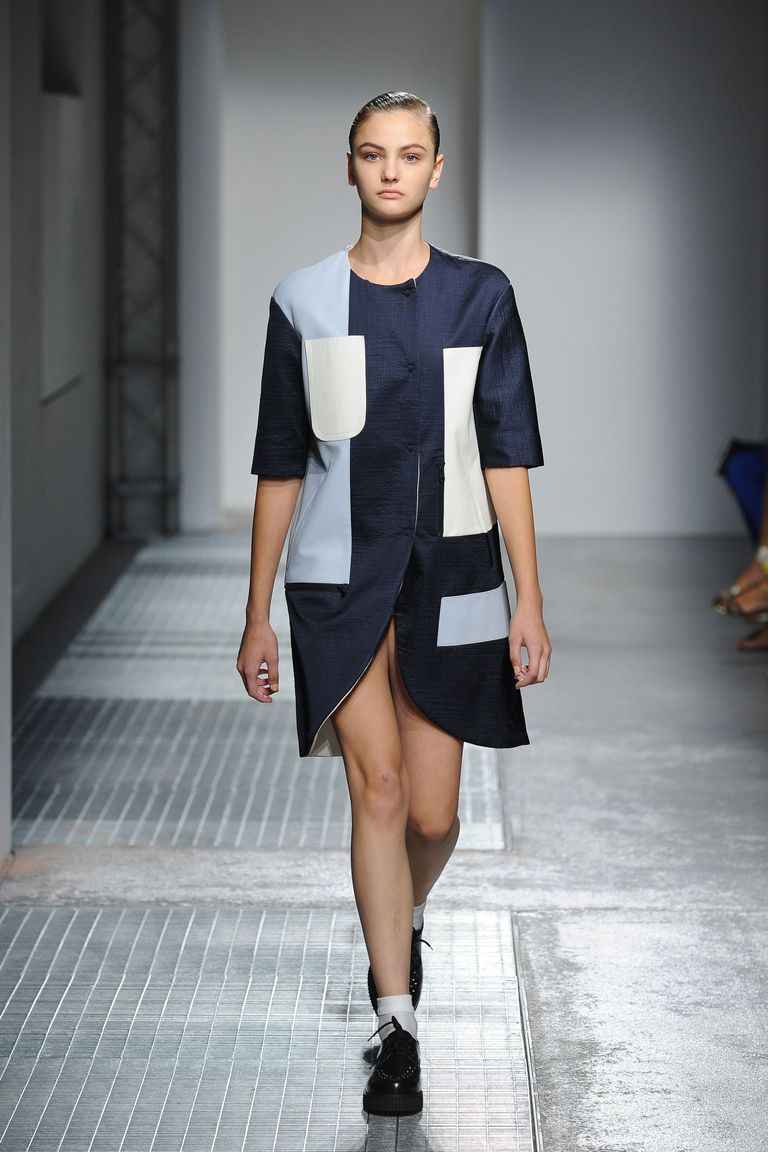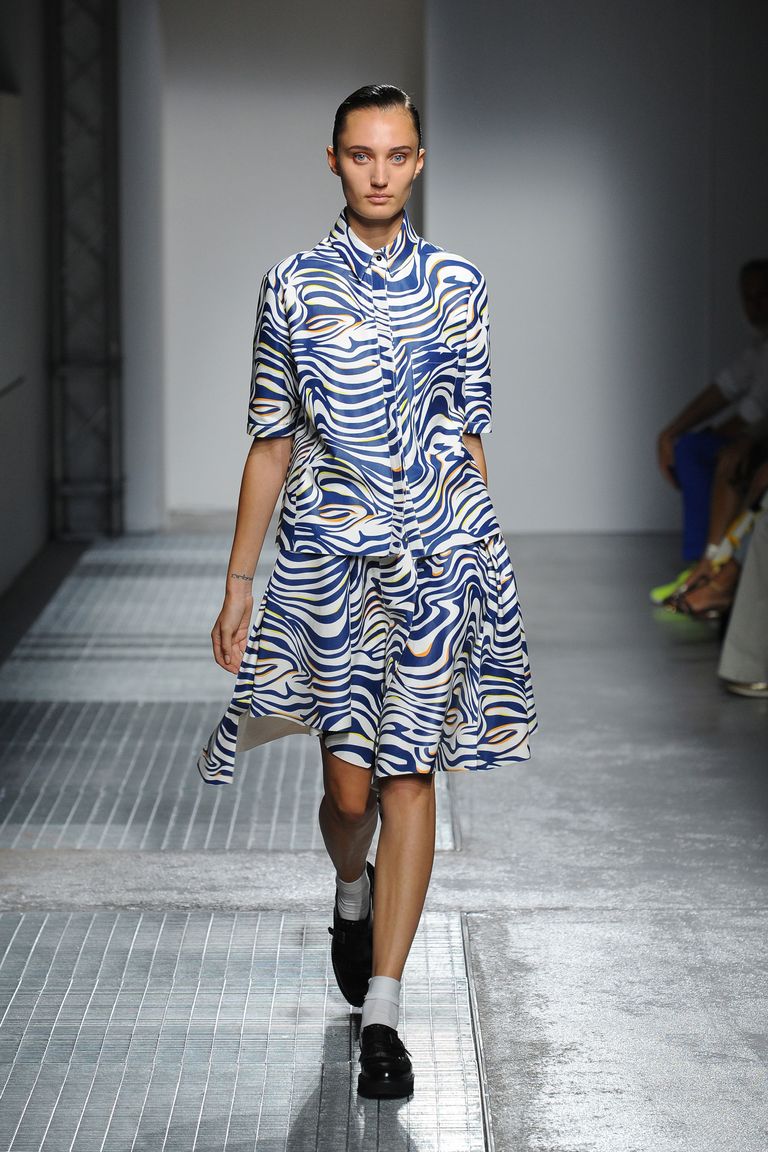DROMe: Meet the Brand That Wants You to Wear Leather in the Summer
She speculates that it’s a shade of dark brown, but the currently pink-haired Marianna Rosati has trouble recalling her natural color. Since the age of 14, the Tuscan-born designer and founder of leather-based Italian brand DROMe has experimented with everything from dark- to white-blonde bobs to “any shade of red” in between. Her blunt bangs, though, she’s maintained for more than a decade because, simply put, “I love geometry.”
This sensitivity to vivid color and shape is the guiding force behind Rosati’s work. Growing up in a family who worked in leather development for the likes of Prada, Yves Saint Laurent, and Céline, Rosati uses leather in every collection, regardless of whether it’s spring or fall. And it’s not just the standard motorcycle jacket, either — she uses the material in unusual ways, like culottes, navel-grazing crop tops, and airy, almost silklike dresses.
For spring, she used hues of pale-blue, pink, and mint-green to capture the effect of bright sunlight on the sky. The seamless curves of Frank Gehry architecture inspired the collection’s sloping hems, geometric fringe, and wavelike prints. And the fall collection (which walked today in Paris) draws on the work of Dutch photographer Erwin Olaf as muse.
The Cut caught up with Rosati to chat about DROMe’s origisn, surprising ways to care for leather, and her stage life outside of the fashion world.
Did you study fashion before creating DROMe? How was the brand conceived?
I studied fashion in Florence at Polimoda. There was another Italian brand called Santacroce that was produced and created when I was still a baby. I started working there as an assistant designer and then it was sold to Prada. And so [the founders of Santacroce and I] started a new project, which is DROMe. As much as I was attached to Santacroce, it wasn’t my brand; it was a completely different story. So here is where I managed to create what I wanted, to show my personality, to show my ideas, to start from scratch.
What does the name DROMe mean?
Because it was a new adventure, drome is like dream in northern European languages — it means something like a journey.
So this is like your journey?
Exactly.
If you weren’t designing, what would you be doing?
I’ve always been in this environment, and it felt so natural working here that I probably never asked. But I have a very strong interest in art and theater, and I really love performing. I do it when I have time in the evening because where I live in Italy, there’s a theater director who runs an Italian-English company for contemporary theater performance. It’s not like Shakespeare. You dance and it involves more physical performance, like a circus. I even had my own personal show once. It was a monologue about a creature that was living in the future and was living a little bit like Wall-E.
I feel like a lot of Italian fashion is very dressed-up and proper. Do you try to make your clothes more youthful and sporty and athletic?
Yes, my idea of how women dress today is very dynamic. There’s still the element of dressing up, but also the need for comfort and feeling cool, fresh, and elegant, but low-key. I think that this is a very important part of the DROMe image because I always try to achieve this balance of sophistication. Beautifully dressed but not like, Oh, wow, I’m going out for a big gala night.
Would you say your brand is not traditionally Italian, then?
I think I’ll leave this for others to say, but I think it’s a bit different from the Italian common taste of brands. I mean, lots of people tell me, “Oh, I [wouldn’t] think you were Italian if I saw the collection, and didn’t know it was you designing it,” so I think that there’s something more international about it. The project, when it started, gathered more customers outside Italy first [in Europe, Russia and Japan], and then Italy caught up later.
I’ve noticed that all of your fabrics are very light. The leather is almost like fabric.
It’s because we work on the base of leather, starting from getting the leather to feel light through working it by hand. And then we use perforations a lot, like leather cuts or metal knife cuts, techniques that enhance this kind of softness in this material. It’s not only like a piece of leather. It becomes a piece of fashion. You wear it and it’s not hot because it’s perforated, and you have air coming through.
Is it tricky to care for these pieces since they’re leather?
Not more carefully than a piece of silk. I think that when you have a very delicate silk shirt, it’s the same as with leather. I have some friends who actually wash our pieces in the washing machine on delicate. If you use the machine without the spin cycle, you can just let the leather dry flat without wringing it. All the water goes out, and basically all the oils make it soft. Leather is delicate, but not as delicate as people think.
Click to view select looks from the spring 2015 collection.
This interview has been edited and condensed.
